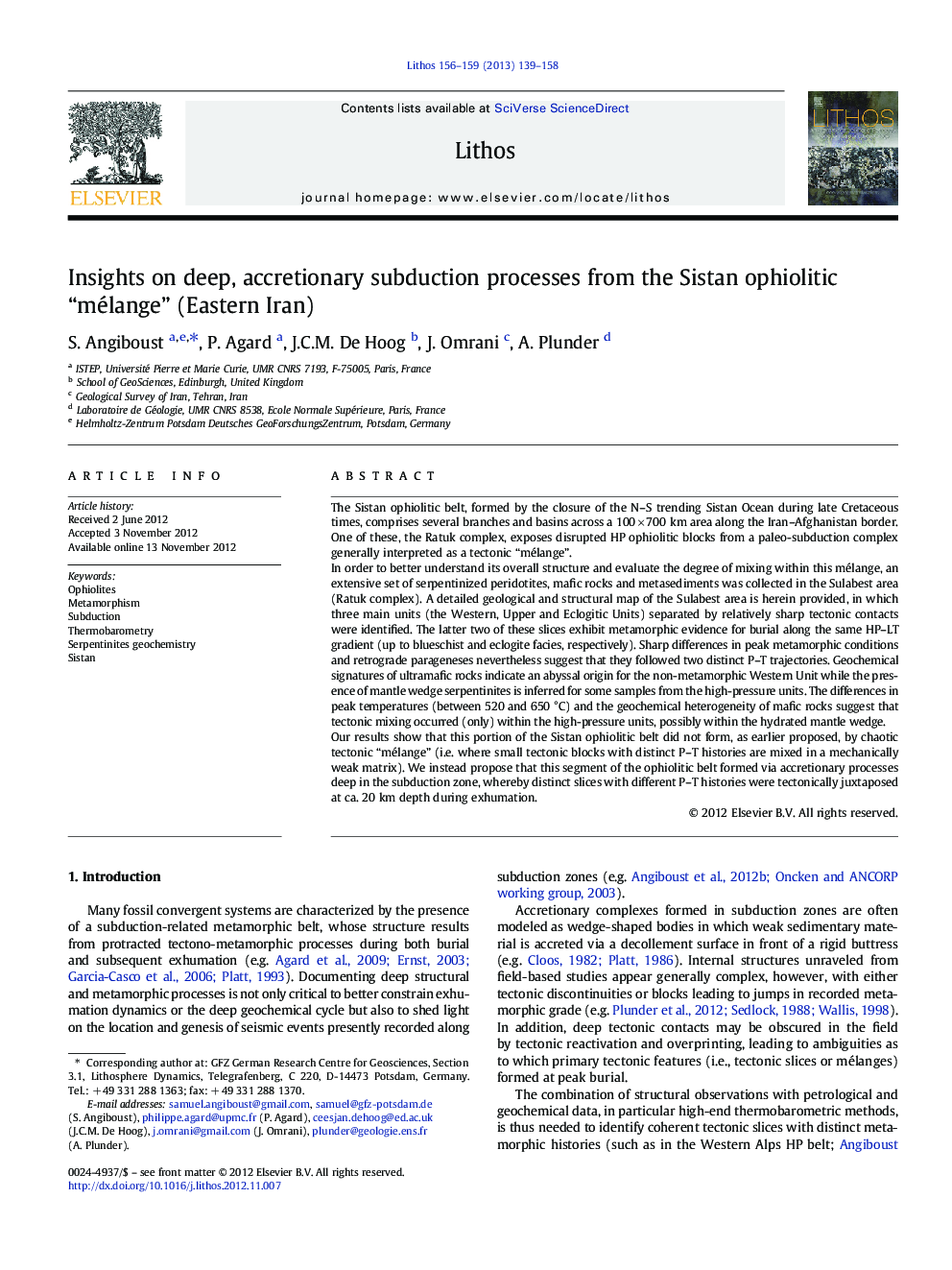| کد مقاله | کد نشریه | سال انتشار | مقاله انگلیسی | نسخه تمام متن |
|---|---|---|---|---|
| 4716383 | 1638697 | 2013 | 20 صفحه PDF | دانلود رایگان |

The Sistan ophiolitic belt, formed by the closure of the N–S trending Sistan Ocean during late Cretaceous times, comprises several branches and basins across a 100 × 700 km area along the Iran–Afghanistan border. One of these, the Ratuk complex, exposes disrupted HP ophiolitic blocks from a paleo-subduction complex generally interpreted as a tectonic “mélange”.In order to better understand its overall structure and evaluate the degree of mixing within this mélange, an extensive set of serpentinized peridotites, mafic rocks and metasediments was collected in the Sulabest area (Ratuk complex). A detailed geological and structural map of the Sulabest area is herein provided, in which three main units (the Western, Upper and Eclogitic Units) separated by relatively sharp tectonic contacts were identified. The latter two of these slices exhibit metamorphic evidence for burial along the same HP–LT gradient (up to blueschist and eclogite facies, respectively). Sharp differences in peak metamorphic conditions and retrograde parageneses nevertheless suggest that they followed two distinct P–T trajectories. Geochemical signatures of ultramafic rocks indicate an abyssal origin for the non-metamorphic Western Unit while the presence of mantle wedge serpentinites is inferred for some samples from the high-pressure units. The differences in peak temperatures (between 520 and 650 °C) and the geochemical heterogeneity of mafic rocks suggest that tectonic mixing occurred (only) within the high-pressure units, possibly within the hydrated mantle wedge.Our results show that this portion of the Sistan ophiolitic belt did not form, as earlier proposed, by chaotic tectonic “mélange” (i.e. where small tectonic blocks with distinct P–T histories are mixed in a mechanically weak matrix). We instead propose that this segment of the ophiolitic belt formed via accretionary processes deep in the subduction zone, whereby distinct slices with different P–T histories were tectonically juxtaposed at ca. 20 km depth during exhumation.
► Three main tectonic units with different P–T paths have been identified on the field.
► Eclogite-facies unit formed by mixing of basaltic crust in the hydrated mantle wedge.
► These units were tectonically gathered in the accretionary wedge during exhumation.
► The Sistan ophiolite does not show a structure typical of a subduction mélange.
Journal: Lithos - Volumes 156–159, January 2013, Pages 139–158